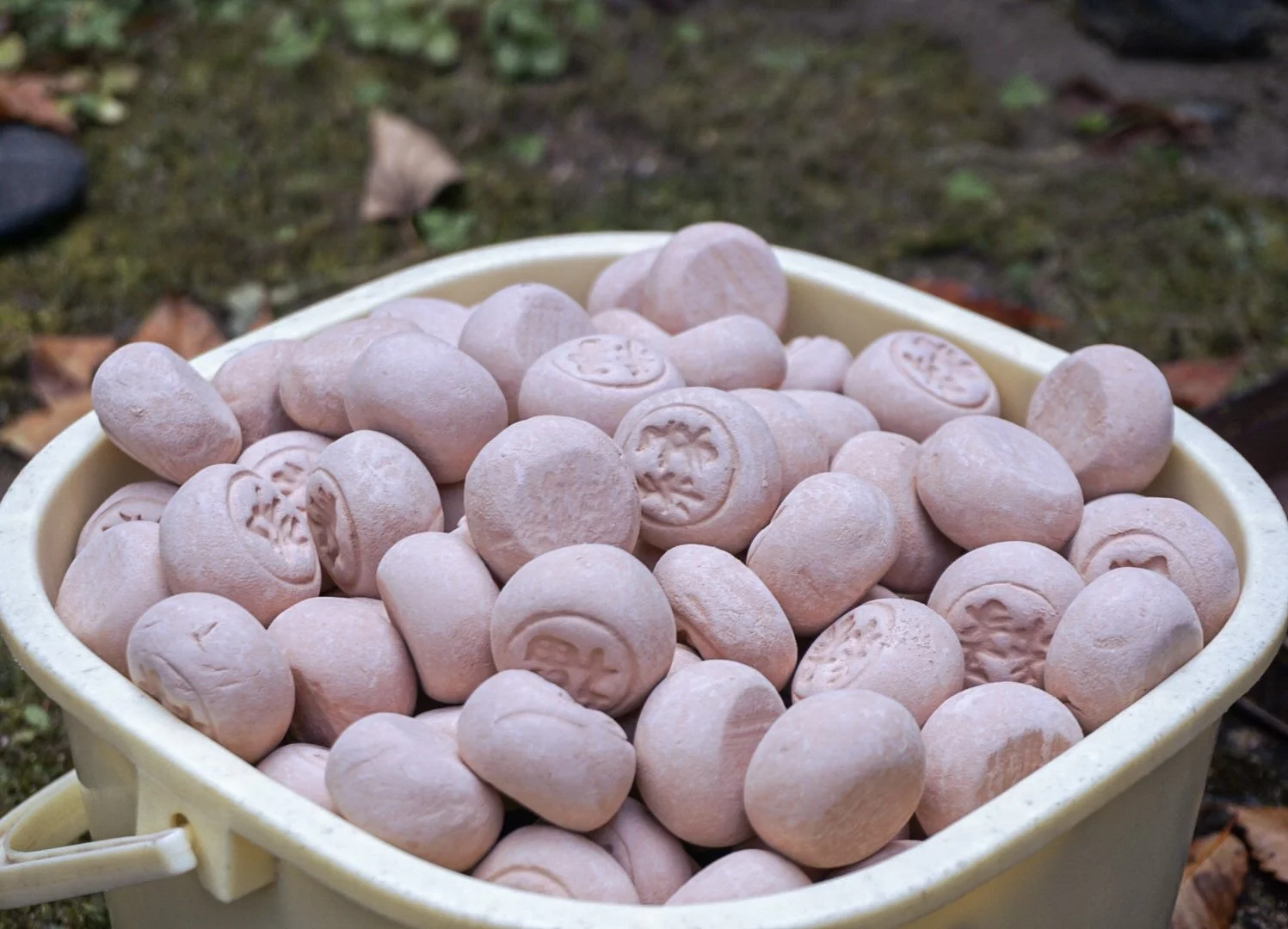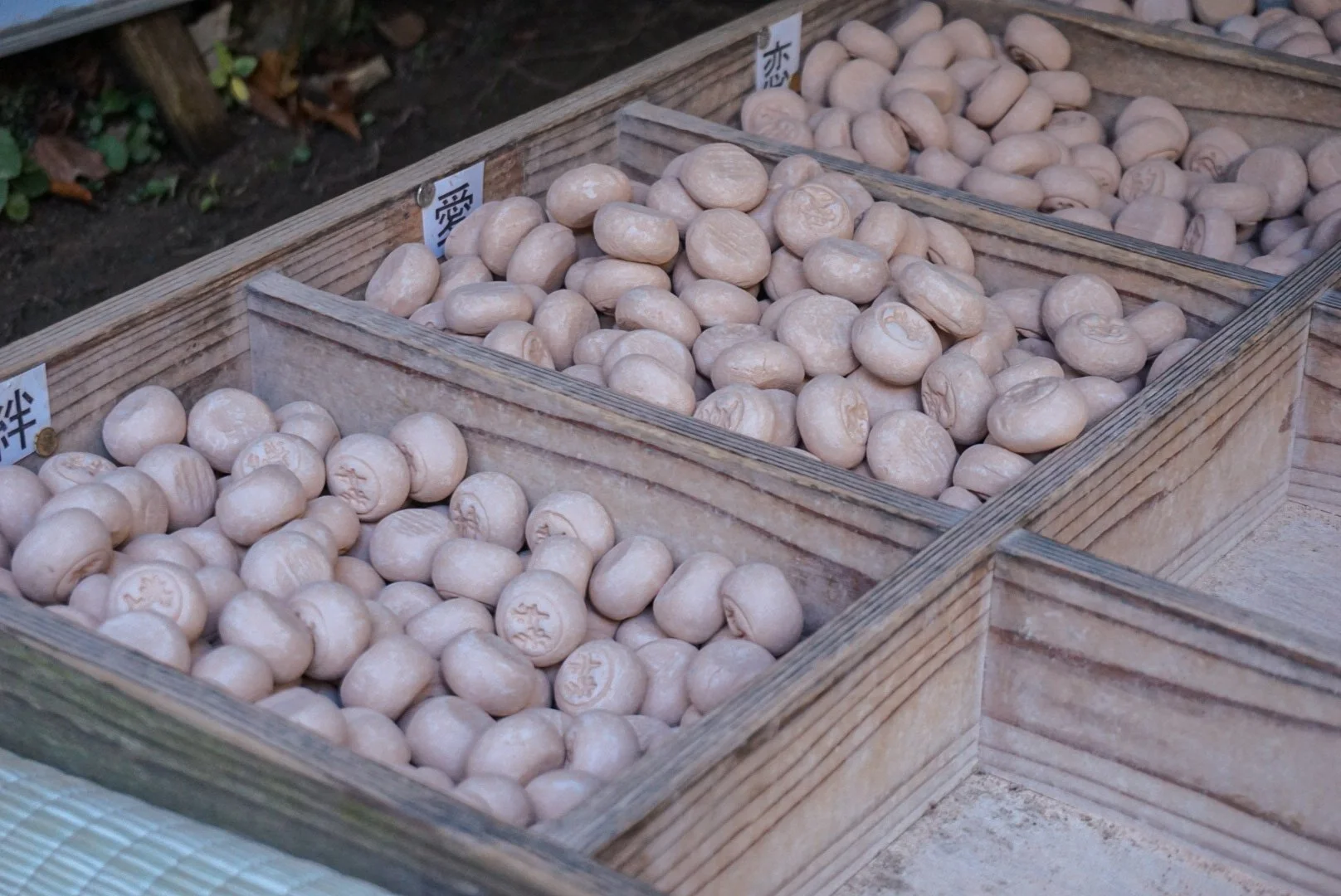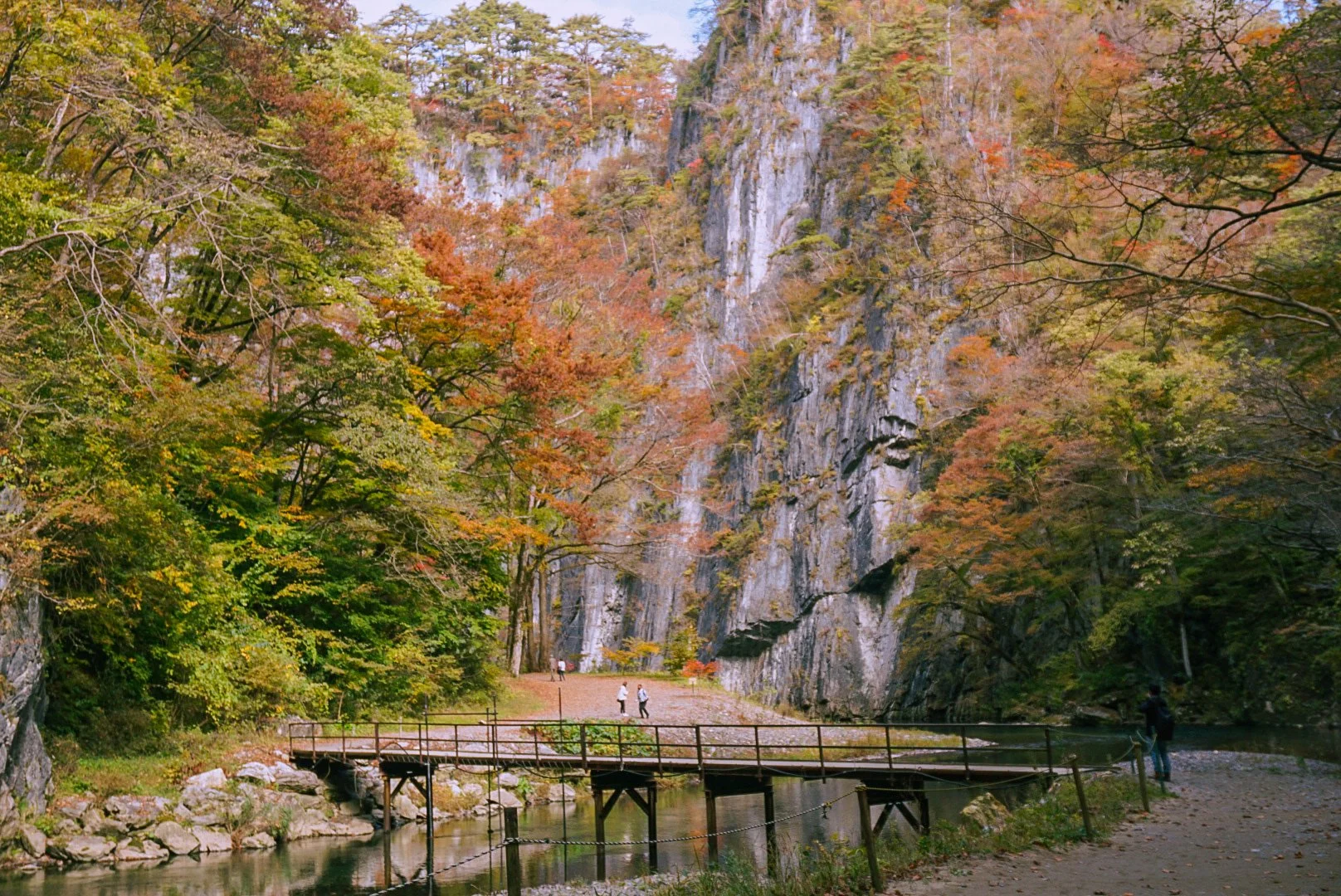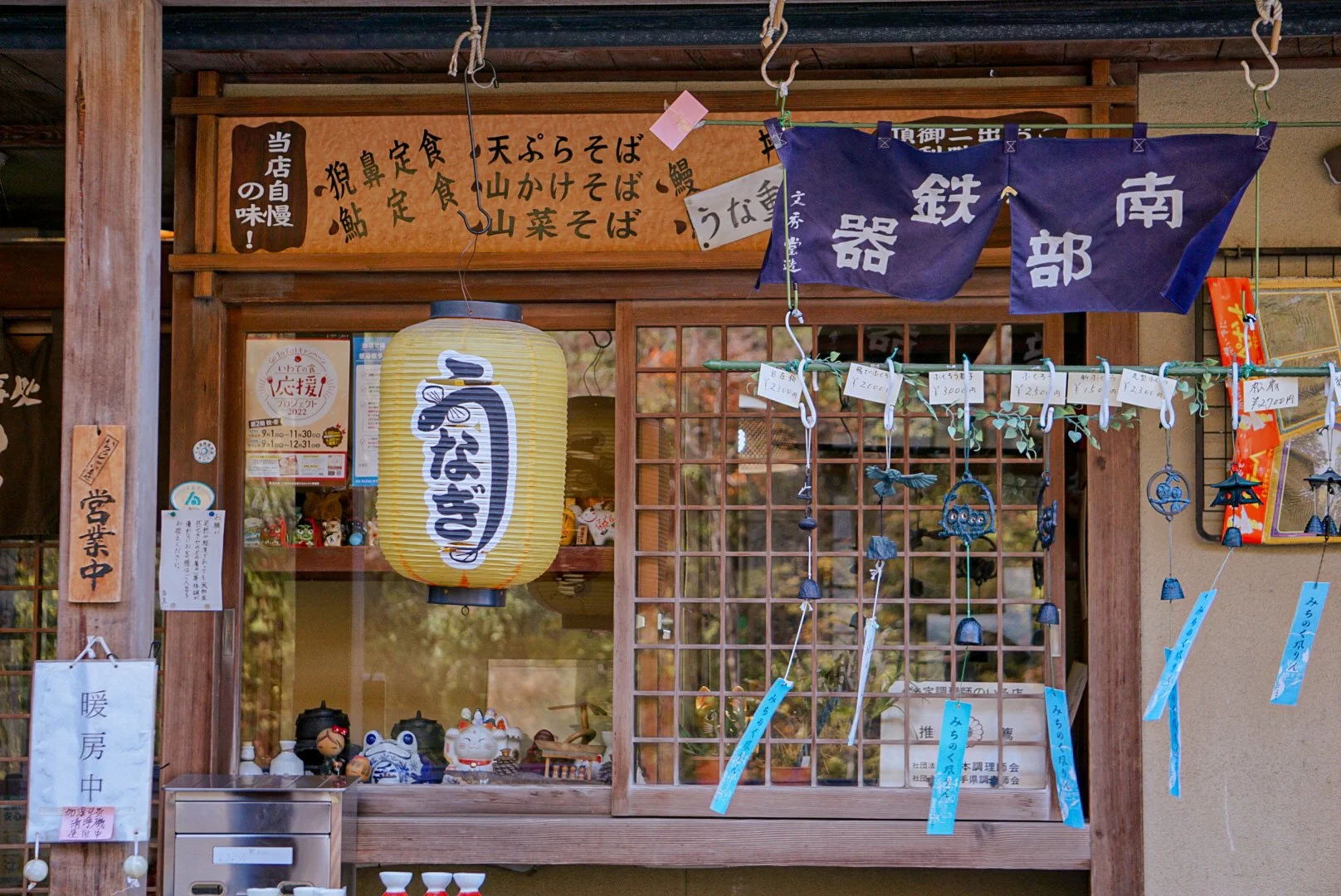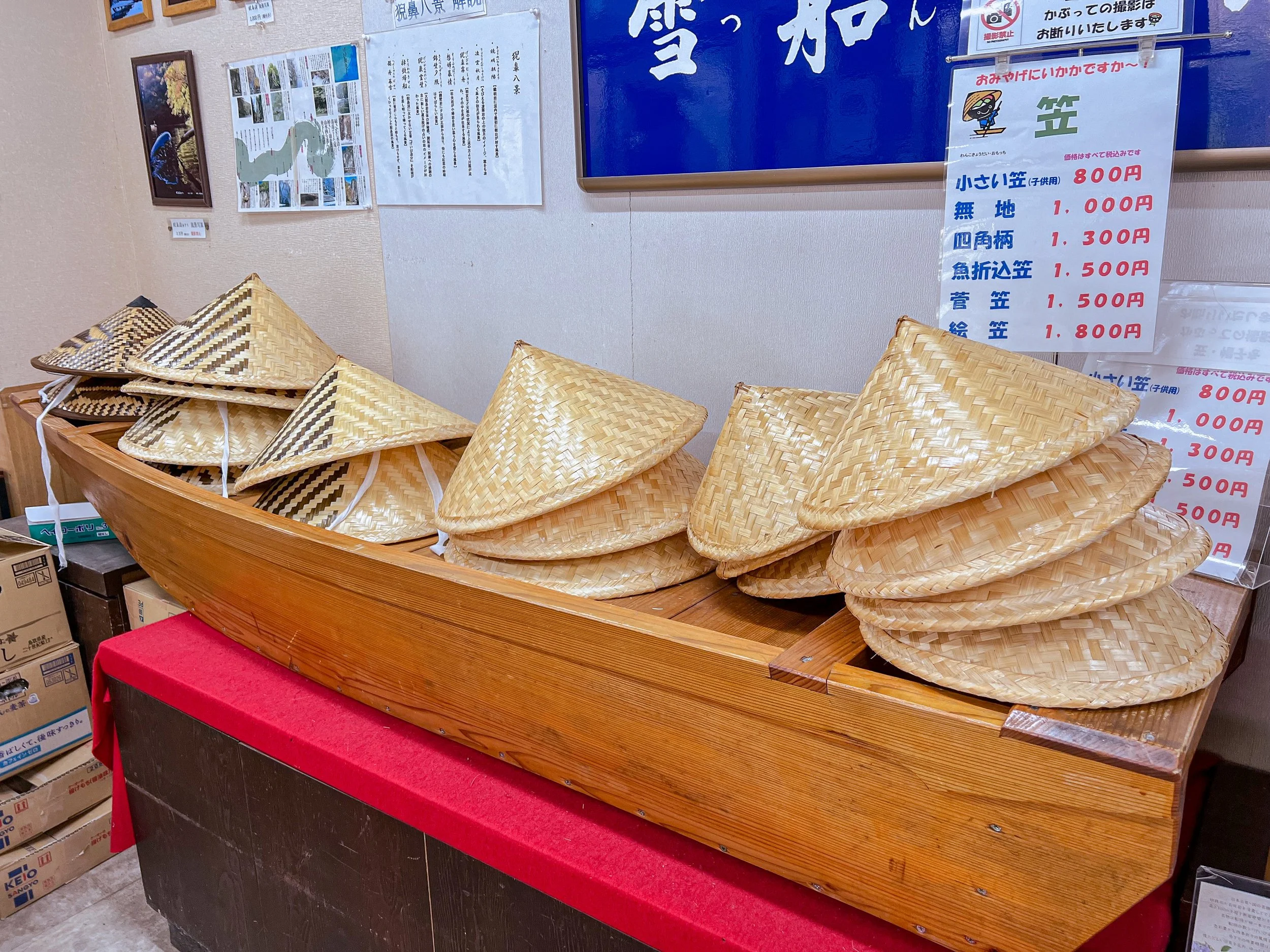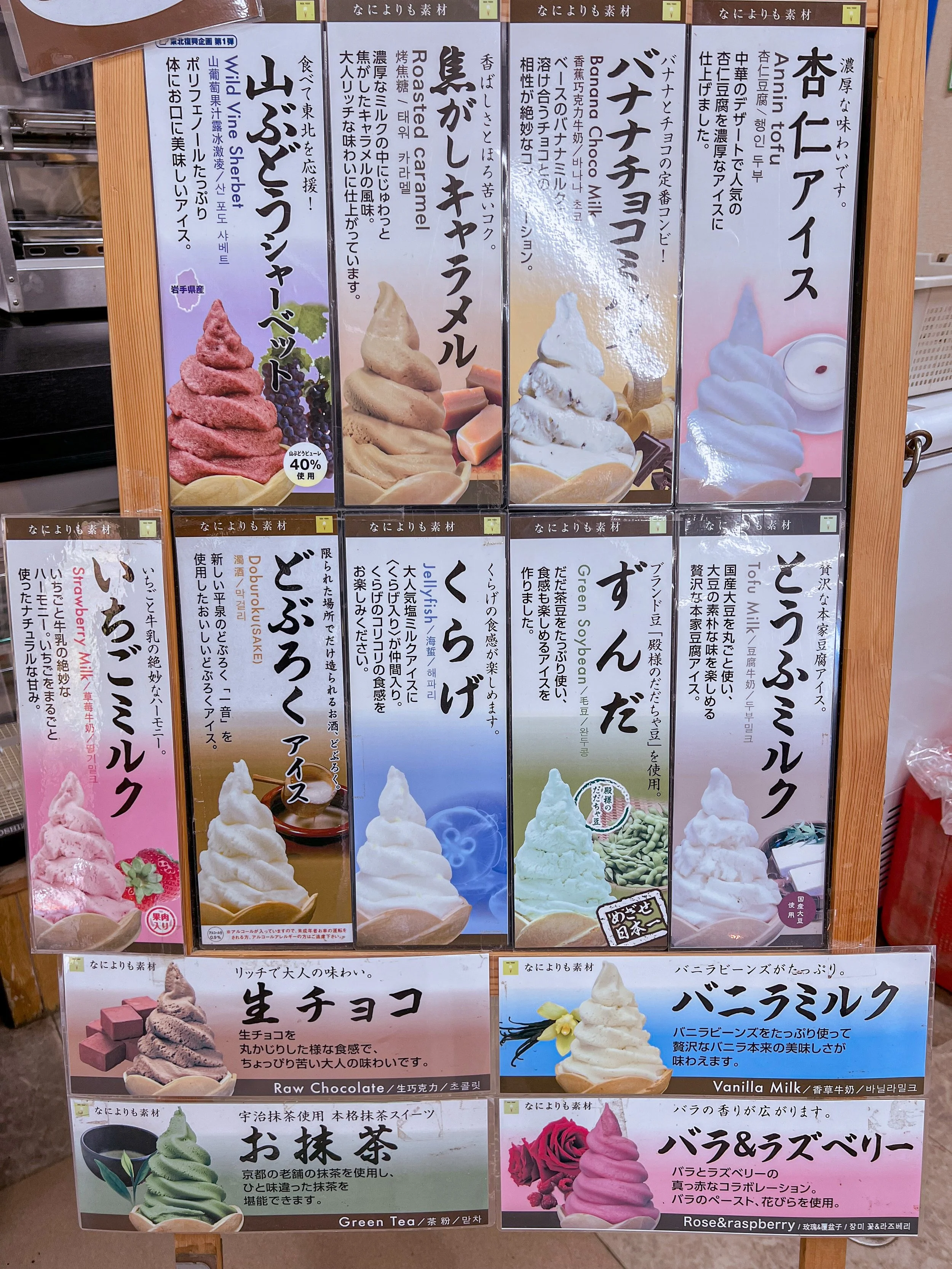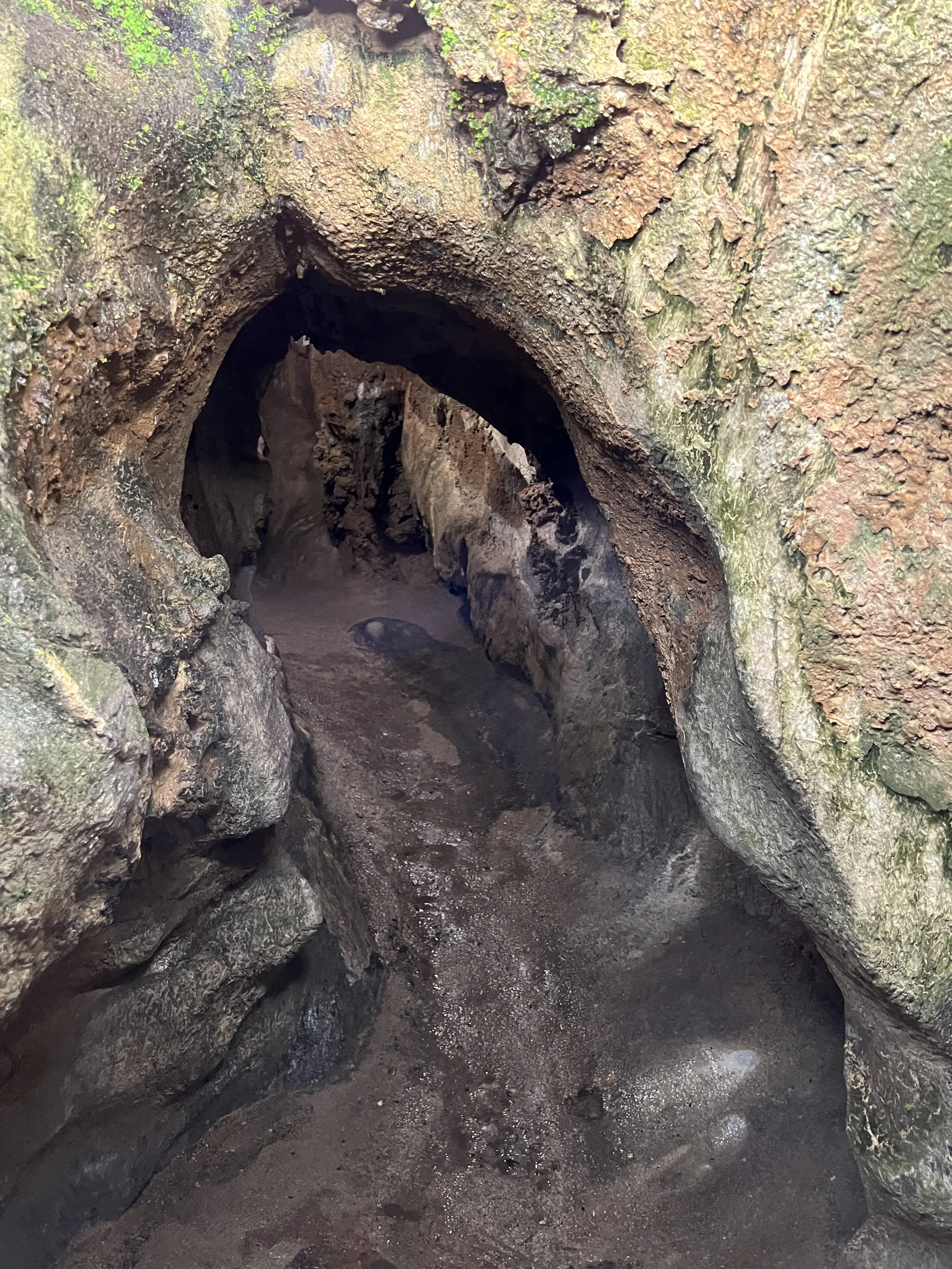Geibikei Gorge
Geibikei Gorge was a place I had on my list for a long while, especially since it’s one of the top 100 greatest landscapes of Japan. River cruises are common all over the countryside and they’re slowly becoming one of my favorite things to do in places where they’re available. I was looking forward to seeing Geibikei Gorge, and it really delivered on the scenery and ambiance.
The boat ride was a unique experience and I really enjoyed the commentary from the boatman, who used a bamboo pole to maneuver the boat. He explained some of the rock formations in the cliff sides while sneaking in a few jokes. I knew we had a comedian when he said “only upload pretty pictures to Instagram, no ugly ones please.” He had a lot of people cracking up during the ride through the gorge.
There was a noteworthy part of the trip where the boatman sang a traditional Japanese ballad. His voice was very impressive, and in that moment I felt grateful to be a part of such a special experience. The song was translated in the brochure I received before the cruise started:
As I pole my boat
on the clear waters of the Satetsu River,
the clouds that dull my heavy heart
are dispelled by The Lion’s Snout.
Come see for yourself in old Iwate,
this wonderful sight, unrivaled elsewhere.
Take the Ofunato Line,
it’s not far from Ichinoseki.
“The Lion’s Snout” refers to a rock formation at the end of the gorge that looks exactly like the snout of a lion. This is how Geibikei Gorge got its name, as the Japanese word “geibi” means “lion’s nose.”
One thing that I loved about this cruise was the fact that ducks followed us the entire time. A lot of people in my group had purchased food for them before getting on the boat, so there were several ducks following us. They made sure their presence was known by quietly quacking in the background. The ducks were very cute and they got super close to the boat so we could snap some photos. Some people were even able to hand feed them!
Duck food that guests can buy before the cruise
The wildlife was adorable, but the real star of the show was the natural beauty of Geibikei Gorge. The limestone cliffs are over 100m (328ft) on both sides and they looked magnificent decorated in fall colors. The blue green water was also clear enough to see giant koi swim lazily alongside the boat.
The brochure also mentioned that the gorge is open in every season, and winter seems extra special in my opinion. Winter boats are completely covered and have a kotatsu to keep passengers warm. They also serve hot pot, so a nice meal is included with the trip. I can only imagine how magical the winter scenery is here. There’s also a “tea ceremony boat” available only in May, where passengers can sip green tea while admiring the views. I love how there are a variety of ways to enjoy Geibikei Gorge. It makes me want to keep coming back so I can have all the seasonal experiences!
The boats can be seen more clearly here. We sat on those orange pads which were actually our life jackets.
There are many sights along the river and a couple of them really stood out for me. One of them was a cave with a shrine dedicated to the god of treasure. There was a spot in front of the shrine with a collection of coins, and the boatman said we could throw one and try and get it in. He joked about having a better chance of it going in if we throw a 500 yen coin (which was about $3.50 at the time). A lot of people ended up sending their coin far behind the shrine, and that resulted in a breakout of laughter from everyone after hearing it bounce off the ground.
Closer to the end of the gorge is a section that’s extremely deep called “Lurking Dragon Depths.” I still can’t get over how cool that name is, and the legend behind it is even better. Supposedly, there’s a dragon beneath these depths lying in wait for its chance to rise up from being a Geibi carp. I felt a bit uneasy passing this part of the gorge, but I’m pretty sure it was just my fear of deep water.
The shrine dedicated to the treasure god. The coins are visible right in front.
Lucky Stones
After 30 minutes of drifting through the gorge, we were able to get off the boat and walk around a sandbar. There are lucky stones available for purchase at the end of the walk. Each stone has a Chinese character engraved on it and you can choose which ones you’d like, such as longevity, income, love, and 7 others. After buying the stones, you can attempt to throw them in a hole that’s in a cliff across the river. If you manage to throw your lucky stone in the hole, your wish will come true!
I bought 3 stones and really put my throwing arm to the test. I got close with one stone, but fell short with the other two. I hung around for a little while after throwing my stones to see if someone could get theirs in. There was one person who did, and the people around who were there to witness it were just as shocked as I was!
The scenery in this area was also noteworthy. The limestone cliffs seemed taller and even more outstanding than the ones we passed on the river. Enormous fish gathered in groups by the shore as well, and a lot of people took this chance to feed them. I was honestly surprised by the size of these fish and gasped when I first saw one close to the boat.
Lucky stones
Trying to throw the stones in the hole
View of the end of the gorge
All the fish gathering to be fed
Souvenirs & Ice Cream
After the nice ride back, I did some shopping in the main area of the gorge. I thought some of the souvenirs were unique and I came close to buying one of the hats that the boatmen wear. I also saw bags of lucky stones that could be bought and taken home. There were actually a lot of stores around here that sold handmade goods and snacks from not only Iwate, but the whole Tohoku region. It’s so easy to spend money in these kinds of stores because everything is so cute, and I want to try some new snacks!
In tourist places like this, there’s usually an ice cream shop with special flavors among the souvenir shops. I always try to find one when I travel somewhere new, it’s kind of become a tradition. I was happy to find ice cream just inside the main building where the boats are docked. One of the craziest ice cream flavors I’ve ever seen in Japan was being sold here…and I just couldn’t bring myself to try it. It was jellyfish ice cream. From the picture, it looked like there might have been chunks of jellyfish in the ice cream so it was a hard pass for me. I got raspberry and rose flavor instead which was delicious!
Main building with ice cream and souvenirs
One of the storefronts
Hats that the boatmen wear available as a souvenir
All the unique ice cream flavors. Can you spot the jellyfish one?
Rose and raspberry!
I was like a kid in a candy store when I stumbled upon a Pokémon manhole cover near the souvenir shops. Since Iwate literally means “stone hands,” Geodude became Iwate’s tourism ambassador. Recently, the prefecture has made 13 new manhole cover designs featuring Geodude with other rock-type Pokémon. I was lucky enough to find one here!
Yugendo Cave: Japan’s Oldest Limestone Cave
Just a 5 minute drive away from Geibikei is the oldest limestone cave in the country. It’s said to be 350 million years old and was once 50 meters below sea level. This was my first time walking through a cave like this and it was amazing. I couldn’t believe that I was walking through and touching something that’s millions of years old, it almost felt unreal. Fossils and ancient rock formations were on display and explanations were next to almost all of them. There were so many signs detailing creatures that lived on the sea floor millions of years ago, and which parts of them had been fossilized. It was crazy to see in person, I wasn’t expecting to learn so much!
Along with all the fossils, there were also stalactites around the cave that were protected by a thick piece of plastic. For most of them, there was a hole to peek in to see them clearly.
Stalactites
Stalactites and a natural pool at the bottom
According to the sign, this framed fossil is from an animal that lived about 350 million years ago. It’s called a Crinoid and it used long tentacles to catch and eat food. These tentacles have been found fossilized throughout Japan!
Walking through the cave was a bit eerie, because a lot of the passageways were extremely narrow. I had to bend down to get through some of the paths. Water was naturally dripping throughout the cave as well, so the stairs were quite slippery. Nevertheless, this didn’t take away from the experience, it only added to it. It really felt like I was some daring adventurer exploring an ancient cave, trying to find my way out unscathed.
I actually found out about this cave through word of mouth while at the gorge, and figured I just had to go since I was so close. It was a nice, spontaneous detour on the way home. I never knew I lived so close to Japan’s oldest limestone cave!










